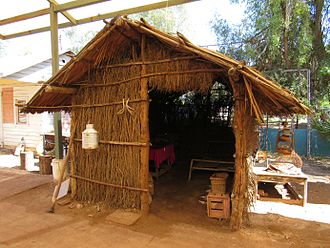Cachanilla (gentile)

Cachanilla is originally the common name of the fresh-smelling wild plant Pluchea sericea, abundant in the Vizcaíno desert in Baja California and in the Colorado desert.
Since the government of Esteban Cantú in 1919, the use of the term "cachanilla" as a name for the inhabitants of Mexicali, (City of Mexicali, and Valle de Mexicali, both in the Municipality of Mexicali).
Tradition says that they were called "las cachanillas" to the incipient hamlet that rose on the banks of Arroyo del Álamo, and the entire Valley of Mexicali. The first settlers learned from the indigenous groups of the region how to make huts with the dried sticks of this aromatic plant, covered with sun-dried mud.
The author Antonio Valdez Herrera immortalized the name worldwide in his corrido: Puro Cachanilla, interpreted by Caín Corpus in the 1960s, however it was mostly popularized in Mexico by the interpretation of the singer Gilberto "Sahuaripa" Valenzuela.